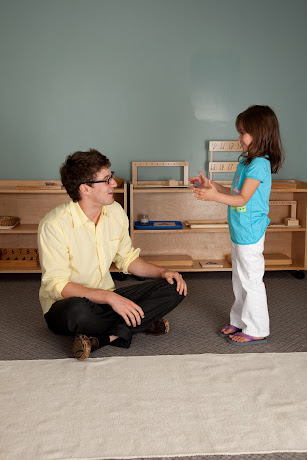
When I first became a Montessori teacher, a well-intentioned person told me that there is no praise in a Montessori classroom. I found myself confused, if not a bit bewildered. How would a child know if she was doing a good job if there wasn't any praise? I even remember an incident where a student came to show me a picture she’d drawn and asked how I liked it. My response (as “taught” by above said person) was “How do you like it?” My student looked at me quite puzzled. She clearly wanted to know how I felt about her work.
The truth is, you can use praise in the classroom, but as Montessorians, we approach the issue from a different perspective. It was then that I began to differentiate the difference between evaluative and descriptive praise.
Using Descriptive vs. Evaluative Praise for Montessori Students
Descriptive praise does not evaluate what a child has done, but rather, describes it in terms so that the child is likely to recognize the truth and credit and praise herself. Learning to use descriptive praise, rather than just compliment or judge, can be difficult, but the payoffs are great. Montessori children become independent thinkers and doers, without having to look to somebody else for approval. They learn to trust themselves and their own judgment. They learn to make corrections or adjustments based upon their own evaluations.
Descriptive praise notices, mentions, and emphasizes steps in the right direction, improvements in behavior, work habits and attitude, social skills, and any absence of undesirable or negative behavior. It can also motivate reluctant or resistant students in our Montessori classrooms.
Descriptive praise has two parts: describe what you see and hear and then describe what you feel.
Evaluative Praise:
- That’s a beautiful picture.
- You are strong.
- You’re a great cook.
- Great job
- That's fantastic!
- I like the details you used in your picture. The colors you chose are so lifelike.
- That was a heavy load. Thank you for helping me carry it.
- The flavors in your salad were so crisp and fresh.
- You’re using your inside voice. Thank you.
- I appreciate that you didn’t interrupt while I was giving my Montessori lesson.
- Thank you for not arguing.
- Thank you for cleaning up when you were asked.
As much as possible, NAMC’s web blog reflects the Montessori curriculum as provided in its teacher training programs. We realize and respect that Montessori schools are unique and may vary their schedules and offerings in accordance with the needs of their individual communities. We hope that our readers will find our articles useful and inspiring as a contribution to the global Montessori community.
© North American Montessori Center - originally posted in its entirety at Montessori Teacher Training on Sunday, June 10, 2007.
© North American Montessori Center - originally posted in its entirety at Montessori Teacher Training on Sunday, June 10, 2007.

I found this article very informative and I will try to use some of these techniques to help improve my teaching skills.
ReplyDeleteI found this article very informative and I will try to use some of these techniques to help improve my teaching skills.
ReplyDelete